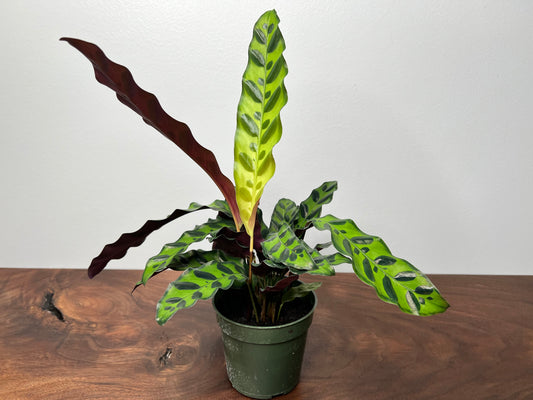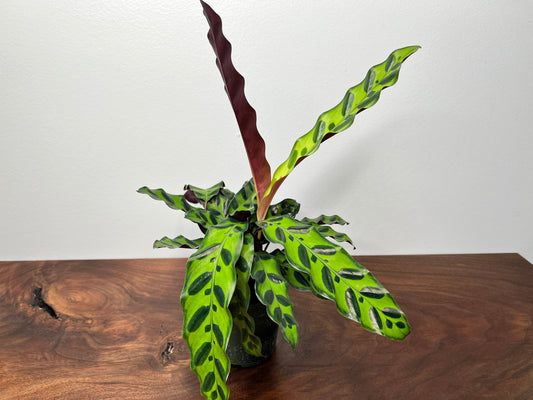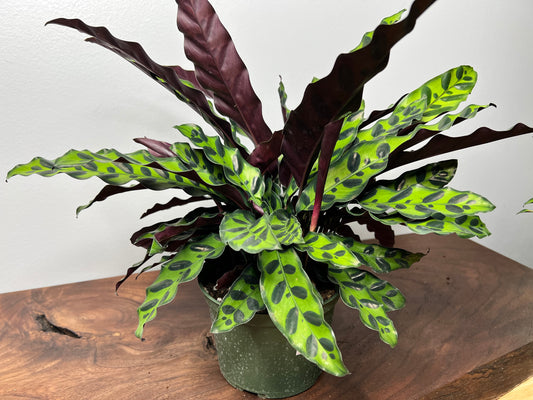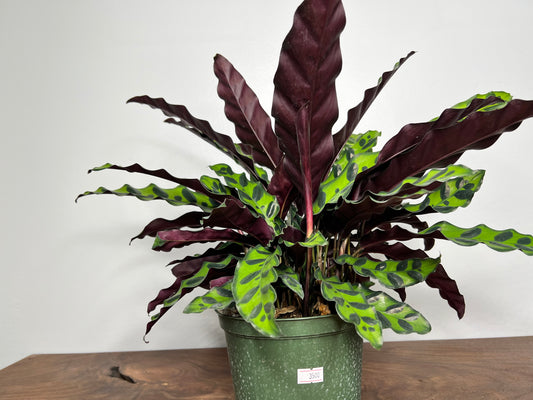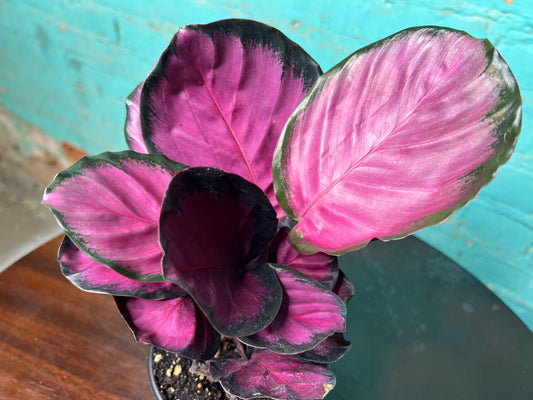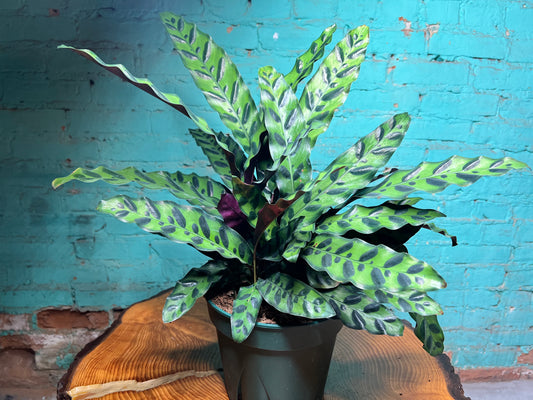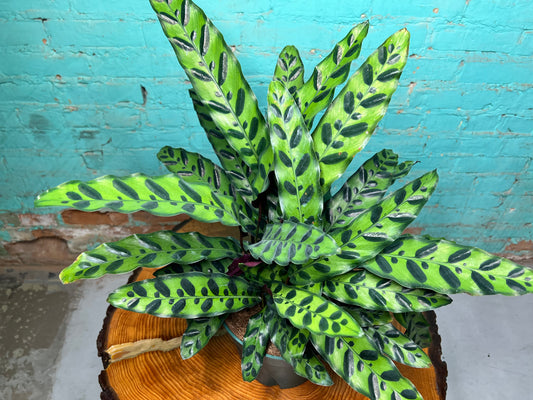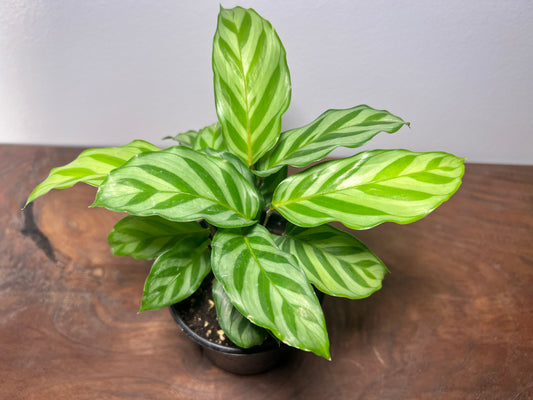Collection: Calatheas
Calathea plants are loved for their unique foliage, which often features bold stripes, intricate patterns, or contrasting colors. The leaves of calathea plants can range from shades of green to purple, and some species may have stunning pink or red undersides. These striking leaf patterns and colors make calathea plants a great addition to any indoor space.
In terms of care, calathea plants thrive in bright, indirect light. They prefer areas with high humidity, so it's a good idea to mist the leaves regularly or place a tray of water nearby increase humidity levels. Additionally, calathea plants prefer well-draining soil that is kept consistently moist but not overly saturated.
It's worth noting that calathea plants are known to be slightly more demanding compared to other houseplants. They can be sensitive to changes in temperature, light, and moisture levels, so it's important to provide them with consistent care. Avoid placing them in direct sunlight or areas with cold drafts.
Overall, if you can provide the right conditions, calathea plants can thrive and add a touch of tropical beauty to your indoor space. They are not only visually appealing but also contribute to the overall air quality by releasing oxygen and humidifying the surrounding environment.
Yes, Calathea plants have specific care requirements to maintain their vibrant foliage. Here are some crucial environmental conditions and care tips:
1. Lighting: Calathea plants prefer bright, indirect light. They shouldn't be exposed to direct sunlight as it can damage their leaves. Place them in a well-lit room away from windows or use sheer curtains to filter the light.
2. Temperature: Calathea plants thrive in temperatures between 65-85°F (18-29°C). Avoid placing them in areas with cold drafts or sudden temperature fluctuations.
3. Humidity: These plants require high humidity to thrive. To increase humidity levels, you can use a humidifier, place a tray of water nearby, or group them with other plants to create a humid microclimate.
4. Watering: Calathea plants prefer moist but not waterlogged soil. Water them when the top inch of soil feels dry, ensuring that excess water drains properly. Avoid allowing the roots to sit in standing water, as it can lead to root rot.
5. Soil: Use well-draining soil that retains moisture without becoming waterlogged. A mixture of peat moss, perlite, and regular potting soil works well for Calathea plants.
6. Fertilization: Feed your Calathea plants with a balanced houseplant fertilizer every month during the growing season (spring and summer) to provide essential nutrients.
7. Pruning: Trim browning or damaged leaves regularly to keep your plant looking neat and healthy. Use clean, sharp pruning shears to make clean cuts.
Remember, Calathea plants can be sensitive to changes, so try to maintain a consistent environment for them. With proper care, your Calathea plant should thrive and display its vibrant foliage for years to come.
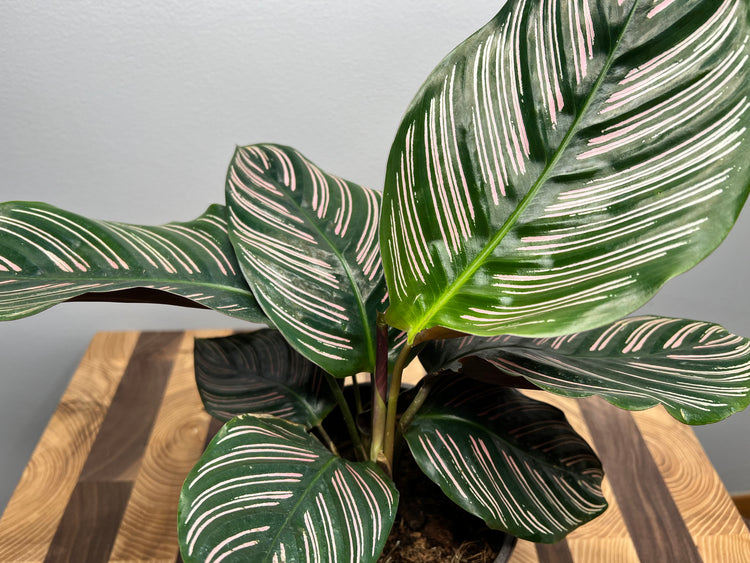
-
Calathea Rattle Snake 4”
Vendor:The Rooted Plant Shop5.0 / 5.0
(6) 6 total reviews
Regular price $18.00 USDRegular priceUnit price / per -
Rattle Snake calathea (6inch)
Vendor:The Rooted Plant ShopRegular price $35.00 USDRegular priceUnit price / per -
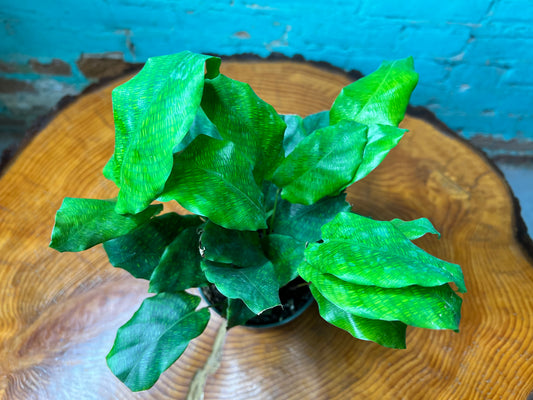
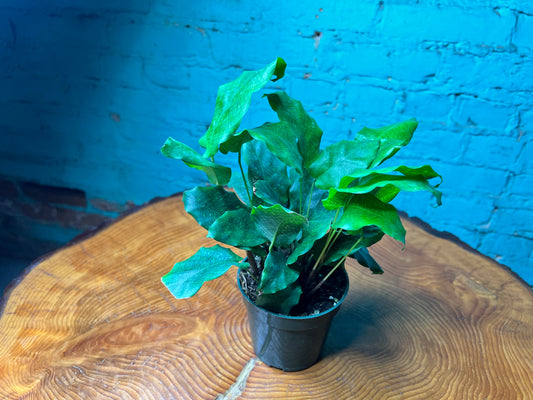 Sold out
Sold outCalathea Network Plant
Vendor:The Rooted Plant ShopRegular price $24.00 USDRegular priceUnit price / per -

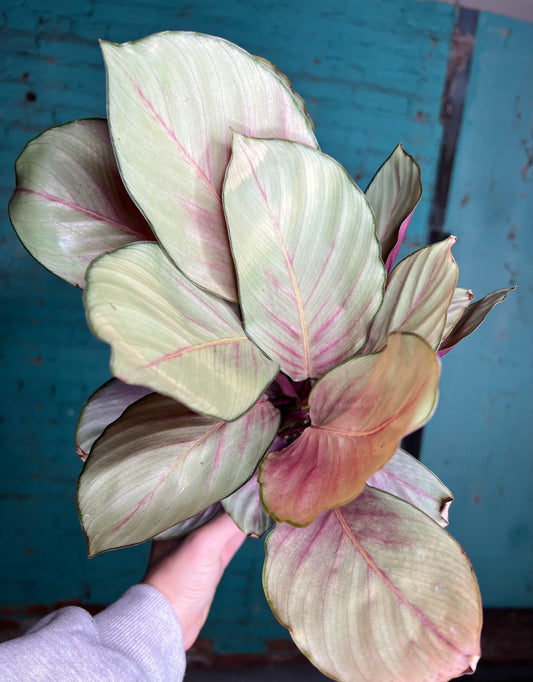 Sold out
Sold outCalethea Silver Plate 6”
Vendor:The Rooted Plant ShopRegular price $28.00 USDRegular priceUnit price / per -
Calethea Rosy 4”
Vendor:The Rooted Plant ShopRegular price $21.00 USDRegular priceUnit price / per -
Rattle Snake calathea 10”
Vendor:The Rooted Plant ShopRegular price $75.00 USDRegular priceUnit price / per -
Calathea Freddie 4”
Vendor:The Rooted Plant ShopRegular price $24.00 USDRegular priceUnit price / per

